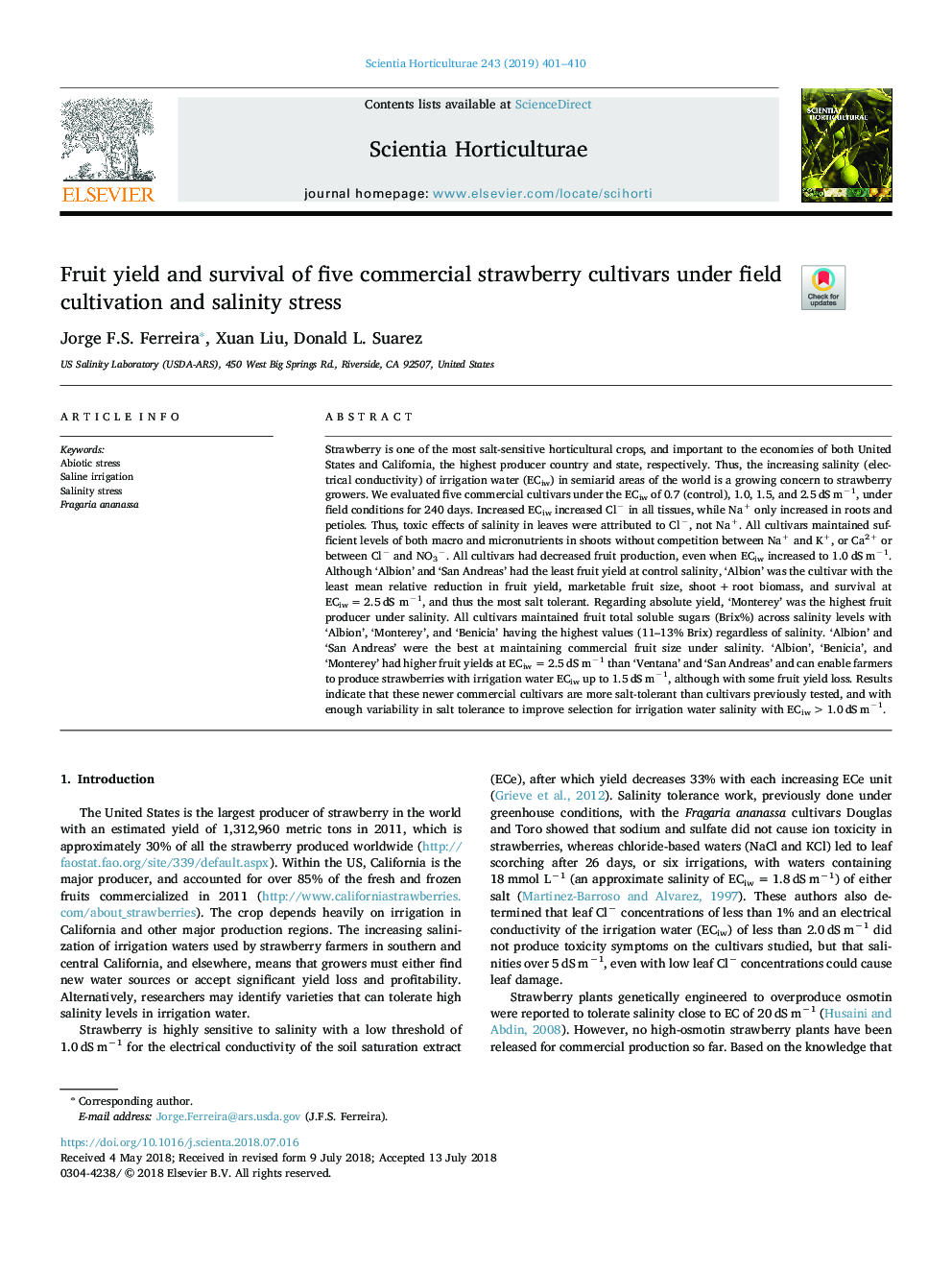| Article ID | Journal | Published Year | Pages | File Type |
|---|---|---|---|---|
| 9489602 | Scientia Horticulturae | 2019 | 10 Pages |
Abstract
Strawberry is one of the most salt-sensitive horticultural crops, and important to the economies of both United States and California, the highest producer country and state, respectively. Thus, the increasing salinity (electrical conductivity) of irrigation water (ECiw) in semiarid areas of the world is a growing concern to strawberry growers. We evaluated five commercial cultivars under the ECiw of 0.7 (control), 1.0, 1.5, and 2.5âdSâmâ1, under field conditions for 240 days. Increased ECiw increased Clâ in all tissues, while Na+ only increased in roots and petioles. Thus, toxic effects of salinity in leaves were attributed to Clâ, not Na+. All cultivars maintained sufficient levels of both macro and micronutrients in shoots without competition between Na+ and K+, or Ca2+ or between Clâ and NO3â. All cultivars had decreased fruit production, even when ECiw increased to 1.0âdSâmâ1. Although 'Albion' and 'San Andreas' had the least fruit yield at control salinity, 'Albion' was the cultivar with the least mean relative reduction in fruit yield, marketable fruit size, shootâ+âroot biomass, and survival at ECiwâ=â2.5âdS mâ1, and thus the most salt tolerant. Regarding absolute yield, 'Monterey' was the highest fruit producer under salinity. All cultivars maintained fruit total soluble sugars (Brix%) across salinity levels with 'Albion', 'Monterey', and 'Benicia' having the highest values (11-13% Brix) regardless of salinity. 'Albion' and 'San Andreas' were the best at maintaining commercial fruit size under salinity. 'Albion', 'Benicia', and 'Monterey' had higher fruit yields at ECiwâ¯=â¯2.5âdS mâ1 than 'Ventana' and 'San Andreas' and can enable farmers to produce strawberries with irrigation water ECiw up to 1.5âdSâmâ1, although with some fruit yield loss. Results indicate that these newer commercial cultivars are more salt-tolerant than cultivars previously tested, and with enough variability in salt tolerance to improve selection for irrigation water salinity with ECiw >1.0âdSâmâ1.
Related Topics
Life Sciences
Agricultural and Biological Sciences
Horticulture
Authors
Jorge F.S. Ferreira, Xuan Liu, Donald L. Suarez,
